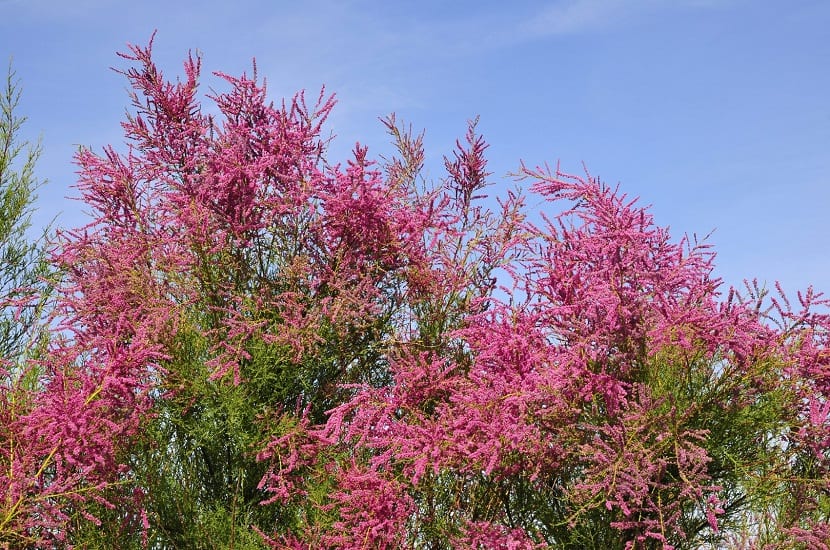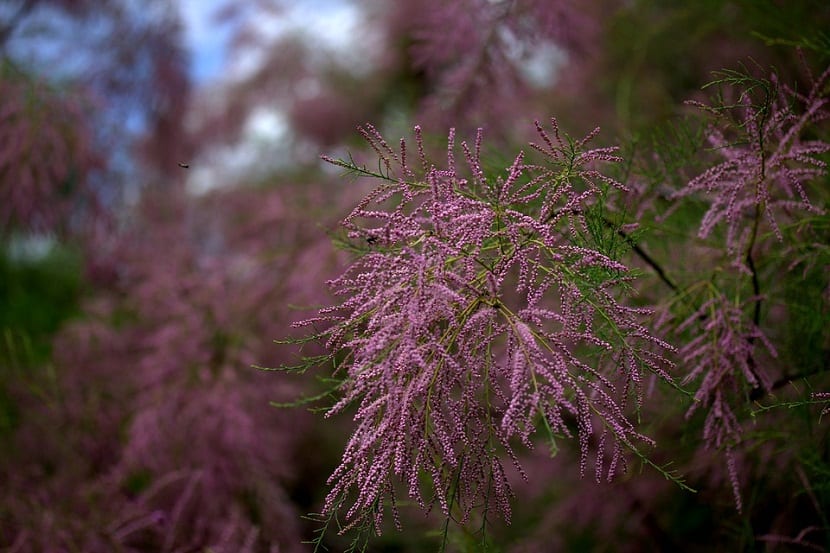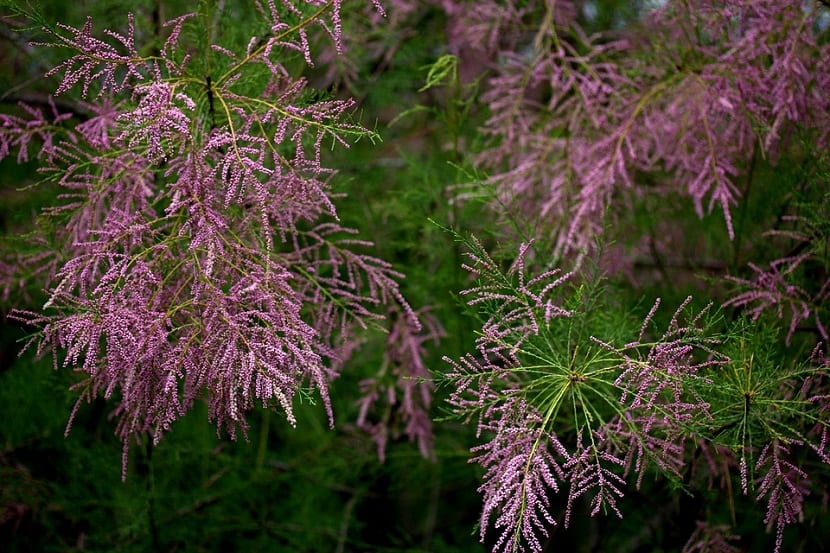
The genus Tamarix, which is also called taray, has a greater quantity than the 60 species of phanerogams, which belong to the Tamaricaceae family, which have their origin in those areas of Eurasia as well as in the countries of Africa.
Tamarix in a genetic name that derives from Latin and that can refer to the Tamaris river in what is the Hispania terraconensis.
Tamarix characteristics

Conclusion shrubs that can be deciduous or evergreen or they can also be small trees that can be between one meter and about 15 meters high, which form fairly dense groves or bushes. The largest tamarisk species is the Tamarix aphylla, which is a long-lived tree that can grow to about 15 m in height.
They generally have the ability to live in soils that are saline, reaching about 15.000 ppm of salt that is soluble.
Its main characteristics are some thin branches as well as foliage that is gray with shades of green and the bark of the younger branches is smooth and reddish-brown.
Over the years they have a color that is purple brown and they are rough. Its leaves can measure between 1 to 2 mm long, since they are overlapping each other. Very often are encrusted with salt secretions.
Its flowers can have a color from pink to white that make their appearance in dense masses of between 5 and 10 cm long, at each of the tips of the branches, for the spring months as well as in the summer, while some others come to bloom in the winter.
The genus Tamarix is adapted for fire, because it has roots that can be so deep to reach the water table, taking advantage of the waters found in the underground. They put limits on competing plants through their ability to absorb salt from layers, which then store it in their foliage and from there are deposited little by little on the surface of the earth, where the highest concentration occurs and this salt has been very harmful to other plants in the area.
The species that belong to the genus Tamarix, serve as food for the larvae that belong to certain Lepidoptera species: Coleophora asthenella exclusively on top of T. africana.
Care and multiplication of the Tamarix

These plants are used in the garden either as plants that are isolated or as many that are in a group and as we have already mentioned, they have great capacity when it comes to supporting soils that contain a lot of salt. like they support salty air very well, so it is most recommended that this type of plant can be sown in places that are near the sea.
Apart from that too we may plant them near a pond just as they have the ability to resist the winds.
The Tamarix is a plant that requires a lot of sunlight directly as well as fresh, with a temperature that can be found between 15 and 25 ° C. This is a plant that has the ability to withstand the cold weather of the winter months.
They are plants that they need a soil that is permeable and they are not usually a lover of limestone types. If we want to sow Tamarix or in its difference we want to transplant a Tamarix, we have to do it in the fall months or in their difference in the spring months.
The best we can do is to prune this plant at least once a year and it has to be done taking into account its flowering time. An example for this would be in those plants that have the capacity to bloom for the spring months, we have to do the pruning in the branches that are from the previous year.
Nowadays we have to fertilize them using fermented manure as well as some fertilizer that is of mineral origin.
The Tamarix is considered one of the plants that they have the ability to resist disease as well as pests.
Each of the flowers has the capacity to produce thousands of very small seeds, which are found in a fairly small capsule that are often adorned with a tuft of hairs that are helpful with regard to anemophilic dispersal. Likewise, have the ability to expand through water and at the time of their germination they need a soil that is saturated.
This plant can be used as a shrub for decoration, as well as a windbreaker or as a shade tree. It is possible to get the most out of wood so that This is used as firewood or it can also be used for carpentry. China is a country that is developing plans so that this plant can play a very important role in its program to combat desertification.
Main species

Tamarix gallica also known by the name of French Tamariz
This is a shrub or tree that is quite decorative, that can be up to about three meters high and that have its flowering time in the summer months, with some flowers that are pink.
Tamarix anglica which is also called the English Tamariz
This is a shrub that can grow to between one meter and three meters in height, with flowers that can be white or pink and that they have their appearance in the summer.
Tamarix chinensis that we also know by the name of Chinese Tamariz
It is a tree that is about 4 m high, with an elegant bearing and branches that always hang down. Its flowering time occurs during the summer months, with flowers that usually have a bright pink.
Tamarix aphylla
This is a bush or also it can be quite a decorative tree, which can measure up to 8 meters high.